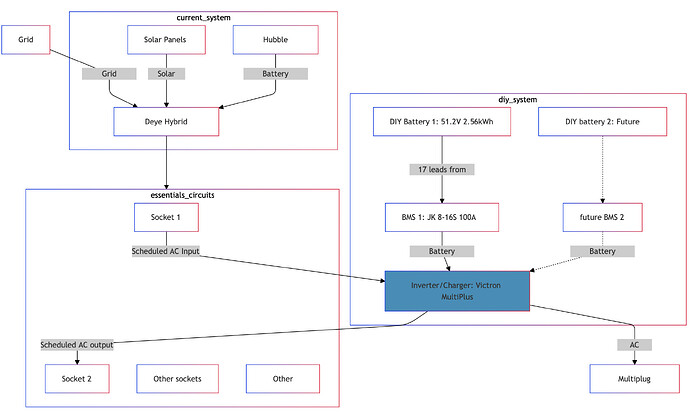I’m on board with this answer. Giving you the reasons why it is not normally advised was just the obligatory thing you will always get from the support guy who may need to wash his hands of it later ![]()
I do something similar, but again, it is totally DIY and somewhat manual at this point. I think TTT did something similar in the past. I have a second Victron system, a 3kVA 12V system, which is normally a test bench. It allows easily testing things without messing with the main house system. It has about 2kWh of battery storage.
Sometimes, not at the moment since we have the weirdest weather in Cape Town in a long time, but when there is lots of sun, I will instruct that system to feed energy into the grid over night. Since there is always a fan running somewhere, or an AC maybe, and I use slightly more over night than I want to discharge the main house battery with, this makes sense. Tomorrow, I recharge that second system again when there is a lot of solar power.
In this way, the second system is in parallel with the first one, but they know nothing about each other. The main system just sees a lower load over night, because the smaller system is injecting a bit of power.
This can be automated with things like Home Assistant, or Node Red, or even with the GX device itself (scheduled charging combined with a negative grid setpoint).
It works for me because I have slightly more solar than battery storage, and instead of buying more battery for the main system, the battery on the test bench is used. Very similar to what you want.
Edit: Also, something has to be said about the efficiency of doing it this way. I have about a third of my total solar production AC-coupled, ie through PV inverters. So the overall efficiency of recharging the 2kWh pack is about 92% (on the PV inverter) and then another 90% on the inverter/charger. If all my PV was DC-coupled, and the main unit was a Multi or Quattro (it is an RS in my case), the round trip efficiency of this second system would have been high 70’s…
With the Dye/Sunsynk being an HF unit though, and the PV to grid part probably quite efficient, the efficiency of this method should not be too bad.
